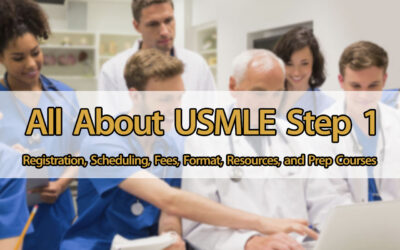Understanding USMLE Step 1 Percentiles: A Comprehensive Guide
Table of Contents
USMLE Step 1 Percentile System: Transition to Pass/Fail
From Dec 9, 2021, the passing score for USMLE Step 1 was 196. On Jan 26, 2022, USMLE Step 1 became PASS/FAIL. However, most students have expressed that the score reports they receive are general and vague. It has become more challenging to pass, and there is no sense of a cut-off anymore.
As a medical student, it’s crucial to have a solid understanding of the USMLE Step 1 percentiles and the scoring system. This exam may be daunting, but understanding it is the first step to overcoming it. This comprehensive guide aims to break down the complexities of USMLE Step 1 and make the concept of percentiles easier for you.
USMLE Step 1: A Crucial Step
The USMLE Step 1 is not just a test—it’s a rite of passage. Composed of 280 multiple-choice questions divided into seven sections, it tests the examinee’s understanding of and ability to apply critical concepts of medical sciences. The exam is seven hours long, demanding academic proficiency and mental stamina1.
The USMLE Step 1 requires a deep understanding of numerous topics, from Hematology to Biochemistry, Microbiology, Respiratory, and Cardiology. Mastering these subjects goes beyond rote memorization. It involves understanding complex concepts and being able to apply this knowledge effectively.
Step 1 Percentile Scores and Their Significance
Percentiles were a more insightful indicator of performance than raw scores. They provided a comparative understanding of where a candidate stands against others. This made the ‘step 1 percentile scores’ critical for students and residency programs, offering a more holistic view of a candidate’s competence.
Average Step 1 Score
The Importance of Mindset
With the transition to a pass/fail system, the dynamics of the USMLE Step 1 and its implications for medical students have changed. The pressure to score high is less pronounced, but the need to pass remains.
MCAT vs. USMLE
What’s Included in the USMLE Step 1 Exam?
Understanding Step 1 Score Percentiles
A crucial part of preparing for the USMLE Step 1 exam is understanding how the scoring works and what your score means regarding percentiles. Percentiles provide a way to compare your score with those of other test-takers. For example, if your score places you in the 90th percentile, you scored above 90% of all other test-takers.
It’s important to note that while scoring around the average (around 230 points) can boost your chances of matching your preferred specialty, scoring below this doesn’t automatically rule out a match. However, the odds of matching your desired specialty increase if you score in the average or higher range. Thus, it would be best to aim for at least the average score, but studying and preparing effectively could increase your chances of scoring, increasing your odds of landing in your chosen specialty.
Conclusion: USMLE Step 1 Percentiles Guidelines
Despite the shift to a pass/fail system, the importance of the USMLE Step 1 must be recognized. It remains a significant milestone in a medical student’s journey.
Preparing for it demands dedication and a focused strategy. Remember, your performance on the USMLE Step 1 is not just about passing the exam but also about demonstrating your commitment to the medical profession.
Frequently Asked Questions (FAQs) About USMLE Step 1 Percentile
What is the duration of the USMLE Step 1 Exam?
How much time do I need to prepare for the Step 1 exams?
How can I prepare for the USMLE Step 1 exam?
Is a higher Step 1 score percentile always better?
What is a good percentile rank on Step 1?
How is the percentile for USMLE Step 1 determined?
What Percentile is 196 on Step 1?
What Percentile is 250 on Step 1?
Another popular query is ‘What percentile is 196 on step 1?’ As mentioned, the minimum passing score is 194, around the 5th percentile. A score of 196 is just above the passing score and generally corresponds to a percentile rank slightly higher than 5%.




